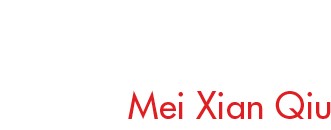Round Hole, Square Peg: A New LGBT Visual Aesthetic For Century 21

Tom Of Finland’s Cover Drawing on Bob Mizer’s Physique Pictorial Magazine
The Bob Mizer-Tom of Finland exhibition at the Los Angeles Museum of Contemporary Art (MOCA) presents a bountiful body of gay male erotica from mid-last century. Years ago brown paper bagged portraits of male nudes moved out from porn shops into art galleries, but this is the first time an American Museum has mounted a show that shows men mounting each other.
Mizer and Finland zapped the zeitgeist of their time. They were two of the most significant figures of twentieth century erotica and forefathers of an emergent post-war gay culture. But what about today? How do we first define, then design a LGBT paradigm for a new pictorial era? In 2013, women, transgender people and other minorities compel visibility and depiction.
I can’t resist the obvious; it’s enough to say that the MOCA hang is very well-hung. It’s daring, provocative and has a fun and fierce intensity, but is it contemporary? Mizer-Finland work lends a rich legacy and contextualization to gay iconography from, the before. But it leaves me wanting, the after, the now.
S.R. Sharp, vice president of the Tom of Finland board of directors told me that the art still has heat and stays current. “Maybe at first glance the exhibition seems campy or historical but though it represents a time gone by it stands up as timeless. It has an endearing and an enduring quality. Bob (Mizer) and Tom (of Finland) were combating a society where homos did not have it easy. They were forced into dark shadows; they were cowering in back alleys.”

Photo by Bob Mizer
All true. Back then to be out was to be an outlaw. MOCA’s exhibition gives the genre a curatorial cachet and establishment visibility. And so as underground, outsider art rises up, it moves inside, museums.
“There are always people on the margins making art who want to stay underground and be alternative, “said Sally Baxter, a mixed media artist and art editor for Suspend magazine. “It’s important not to shy away from the fact that what a makes people queer is that they have queer sex. That’s what makes us gay and I want to see it.”
David Fahey a pioneering Los Angeles gallerist who brought the world Herb Ritts, told me that that showing male nudes is not much different than showing female nudes. “After Mapplethorpe, male nudity was embraced by the mainstream, I’m happy to see that it’s pretty commonplace today,” Fahey said.
“While gay men had hyper-masculine images to drool over, lesbians always saw themselves depicted as bad girls on the covers of drug store pulp fiction novels, vampires or terrifying prison guards – straight male fantasy images, ” said Karen Ocamb, news editor for Frontiers magazine. “That’s why so many of us preferred the world of the imagination – flowers by Georgia O’Keefe or ‘The Dinner Party’ by Judy Chicago or Zena the Warrior Princess on TV.

Mei Xian Qui – The Lovers Courtesy of Paul Kopeikin Gallery
Tom of Finland and Bob Mizer created a culture of imagery that changed the way gay men saw themselves. Theirs was a world that preceded Will and Grace, gay marriage and common place sexual reassignment surgery. I left MOCA’s exhibition thinking about Round Hole, Square Peg, a show Paul Bridgewater originated at Smart Clothes, his downtown, New York City gallery. It sought a new LGBT visual Brand. Bridgewater wrote a manifesto:
Queer identity is not simply a sexual one. Queer artists have a perspective and an experience to contribute to society that is wholly their own and it’s a rich, and worldly one. Having been marginalized and alienated for so long has developed a unique view of self worth, self image, spirituality and companionship.

Tom Atwood – Mother Flawles Sabrina From Kings and Queens in Their Castles
A hunt for new archetypes has become a preoccupation. Stephen Cohen, whose Los Angeles photography gallery exhibited Zackary Drucker’s transsexual photography, Anthony Friedkin’s “Gay Essays,” and Bruce of L.A., warmly supported the idea for a show. Cohen felt that “The search for a new template that includes the many shades of LGBT life today vs. the old stereotypes is long overdue.” And so I am working on a show for the Artist’s Corner Gallery which will be the first LGBT exhibition at photo l.a., one of the oldest fine art fairs in the country. It will feature a special invitational, Wall of Fame to hang next to a juried exhibition.
Round Hole, Square Peg opens at photo l.a. on January 16, 2014. For information and to submit photographic work for juried selection visit: artistscorner.us


















